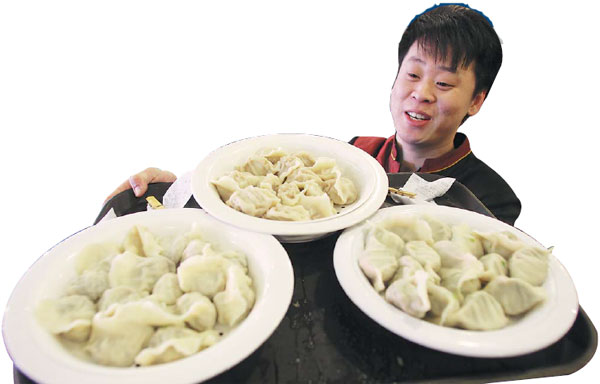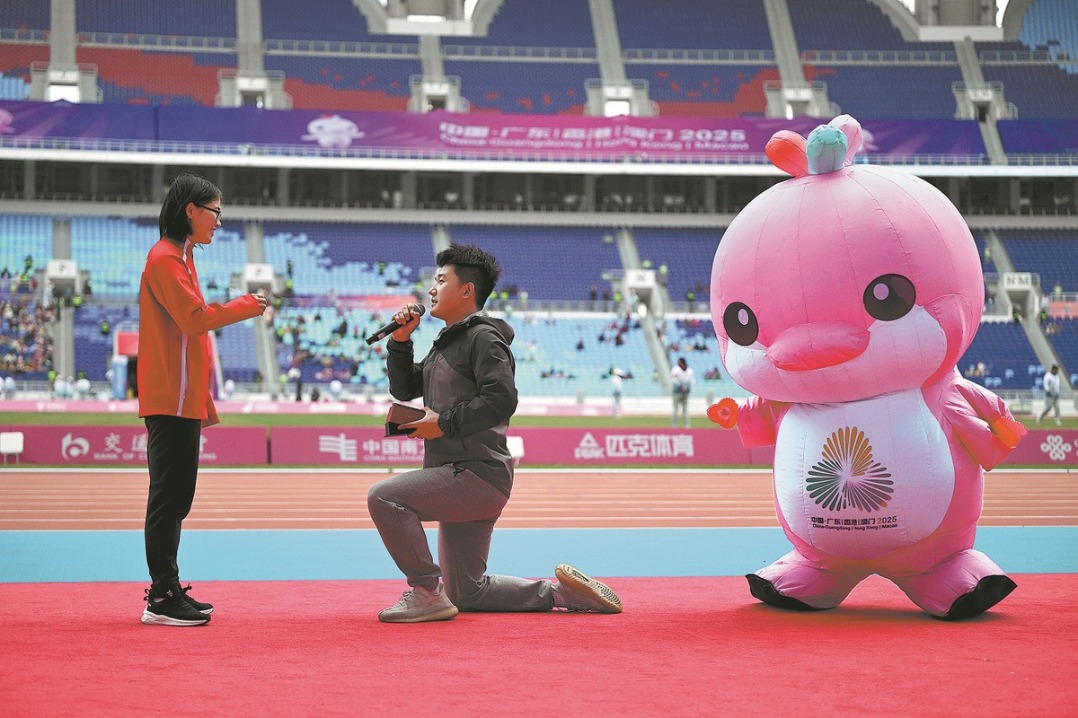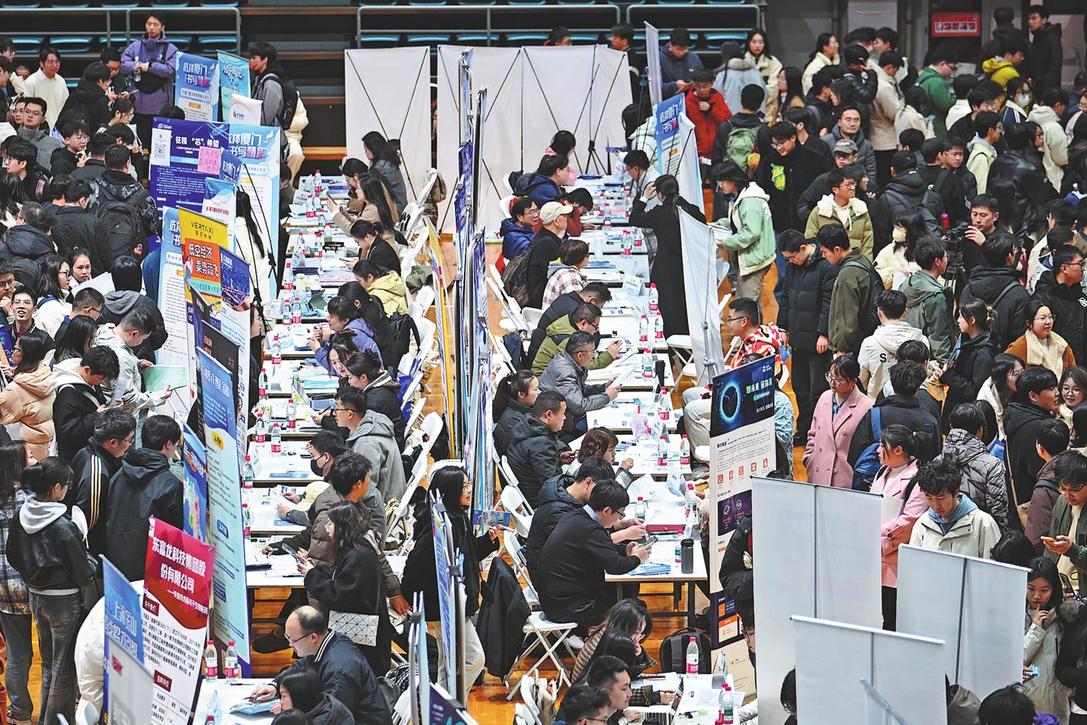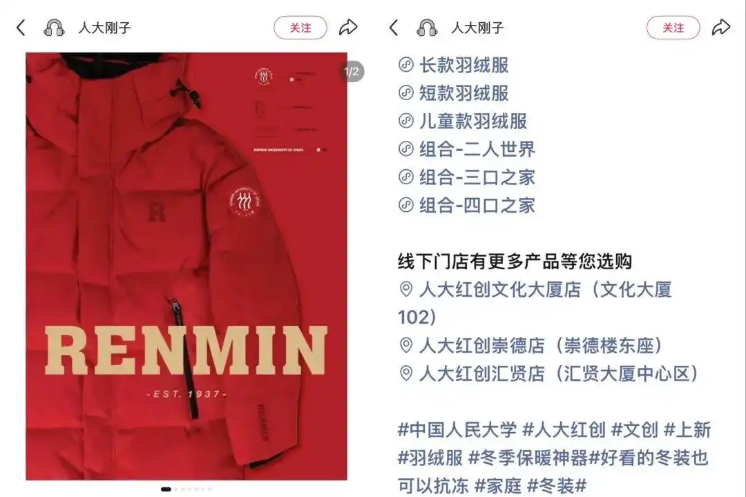Longest night, tastiest feast

Editor's note: To understand China, sit down to eat. Food is the indestructible bond that holds the whole social fabric together and it is also one of the last strong visages of community and culture.
The Winter Solstice will soon be upon us on Dec 21 and, to the Chinese, this is both an important solar term as well as a major traditional festival. The longest night in the year also signals that, from there on, the daylight hours will only get lengthier.
It signifies an awakening of the earth and the start of the annual rejuvenation, culminating in Spring Festival, about a month away.
As far back as 2,500 years ago, during the Spring and Autumn Period (770-476 BC), Chinese astronomers calculated the exact dates of the winter solstices, the first of the solar terms to be so precisely set.
| At Winter Solstice, dumplings are a must in northern China, with more meat used and the fillings speckled with finely-diced dried mushrooms or dried baby shrimp. Zou Hong / China Daily |
To the Chinese, it is yet another sign from heaven to gather together and bond as a family, an occasion that takes more and more effort these days as the urban diaspora spreads.
In the lunar-solar calendar, this is the last of three important family festivals, after Spring Festival and Mid-Autumn festival.
As in every major celebration, food is central.
The southern provinces, less influenced by the conquering Mongolian-Manchurian influences up north, still commemorate the winter solstice in the old ways.
Here, the belief is that this winter festival is almost as important as the lunar new year.
The essential banquet must be prepared, with dishes of chicken, pork, fish and vegetables. Little glutinous rice balls are always eaten, their name wanzi or tangyuan being homophonic with "reunion".
There are always regional specialties in a festival where ancestor worship is included in the rituals. Whether it be a private celebration at home or a more elaborate gathering at the village clan hall, food offerings reflect the terroir and culinary culture.
In the Chaoshan region of Guangdong province, sugar cane plantations dot the countryside and sugar is an important product.
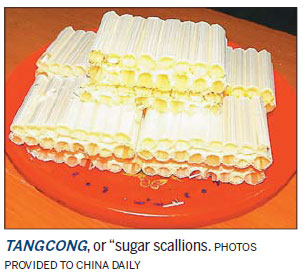
Raw cane sugar is cooked into a thick syrup, which is then spun and pulled into a taffy. The hardening sugar strand is repeatedly worked until it solidifies into slender snowy white tubes that are as light as air.
These tangcong, or "sugar scallions", are eaten wrapped in a flour crepe and garnished with crushed toasted peanuts. It is a labor-intensive candy that must be offered to the ancestors as a sweet reminder that they are not forgotten.
In ancient communities in Fujian and Ningbo, little glutinous rice balls are offered to the gods.
Fujian uses sweet potatoes in both the dough and the filling, while the Ningbo version keeps the rice balls plain, but served in a soup flavored by sweet wine lees. Ningbo is famous for its yellow rice wines.
Cantonese tangyuan combines the best of both worlds. There are different fillings for the rice balls, including red bean paste, sweetened sesame paste, lotus seed paste and peanut paste.
Sometimes, the rice balls are made plain but are colored brightly for an auspicious end to the meal.
Also, they are always served in a sweet syrup flavored by ginger to chase away the chills and aid digestion.
While winters are less harsh in southern China, the bone-chilling winds of the north demand heartier fare.
So in Tengzhou, Shandong province, they celebrate with a steaming pot of mutton soup, a tradition that has prevailed since the Han Dynasty (202 BC-220 AD). According to legend, it was the father of traditional Chinese medicine Zhang Zhongjing who got the people eating mutton.
He believed it was just what they needed to warm up the blood after a cold winter, and to this day gifts of mutton are brought to the elders in the family during the winter solstice.
In the northern provinces, such as Hebei, Liaoning and even in Beijing, dumplings are eaten, as for almost every other major occasion.
Homemade dough is rolled into very thin wrappers for fillings of minced meat and vegetables. Because it is the winter solstice, more meat will be used and the fillings are sometimes speckled with finely diced dried mushrooms or dried baby shrimps.
These hearty dumplings are normally just boiled in water, but during the winter solstice, they are served with soup. The soups will be flavored with shredded dried laver sheets and more of the dried baby shrimp or krill, topped by fresh coriander.
Whatever food appears on the table, the Winter Solstice is the first sign of cheer after a long gloomy season, and there is a lilt of anticipation in the air, as well as the fragrance of festive dishes.
paulined@chinadaily.com.cn
Winter Solstice Soup Dumplings
Serves 4
80 ready-made dumpling skins
1 beaten egg 500g minced pork
300g shrimp meat
6-8 dried shiitake mushrooms, soaked
2 tablespoons minced water chestnuts
2 tablespoons finely diced carrots
I tablespoon cornstarch
1 tablespoon sesame oil
2 tablespoons water
Salt and pepper
Chicken stock
Chinese greens
First prepare the filling:
Roughly chop the shrimp and add to the minced pork, together with diced carrots and water chestnuts. Remove stems from the soaked mushrooms and dice. Add to mixture.
Season with sesame oil, salt and pepper and add cornstarch and water to loosen up the filling. Stir in one direction until the meat mixture binds.
Wash the Chinese greens, which can either be Shanghai cabbage, bok choy or green lettuce. Set aside, ready to use.
Wrap the dumplings:
Place a large spoonful of filling in the center of each dumpling wrapper. Wet the edges with the beaten egg and simply fold over, pressing the edges firmly together and smoothing out any air pockets.
Set aside on a lightly floured board until you finish making all the dumplings.
Heat up a pot of water and a pot of chicken stock.
Cook the dumplings by dropping them 10 at a time into the boiling water. When the dumplings all float to the surface, they are done.
Blanch the greens in the chicken stock and place them at the bottom of each soup bowl. Place cooked dumplings on top and ladle hot chicken stock over them. If you like, you can garnish with chopped spring onions, coriander and a drizzle of sesame oil.
Reunion Rice Balls
1 small packet glutinous rice flour (225g)
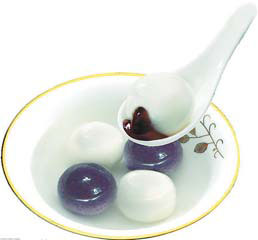
Warm water (blood temperature)
Food coloring - red, yellow, green
5 cm piece ginger, lightly crushed
Rock sugar
Place rice flour into a mixing bowl and add enough warm water so the dough comes together. Be careful to add it a little at a time, sprinkling more water if the dough seems stiff.
Divide dough into four portions, coloring each portion with red, yellow and green food colors and leaving one portion white.
Roll up small teaspoons of dough into little balls.
Make a simple syrup with about liter of water and rock sugar to taste, adding the ginger for flavor.
Cook the rice balls in boiling water, stirring so they don't stick to the bottom of the pot. When they float, they are ready and can be served with the ginger syrup.
Keep the rice balls small so they cook easily. You can also add fillings of crunchy peanut butter or red bean paste but make sure the dough is sealed properly so the filling does not burst during cooking.
(China Daily Africa Weekly 12/16/2016 page18)
Today's Top News
- UN envoy calls on Japan to retract Taiwan comments
- Innovation to give edge in frontier sectors
- Sanctions on Japan's former senior official announced
- Xi stresses importance of raising minors' moral standards
- Coordinated reform key to country's growth
- Shandong gives new life to traditions
















